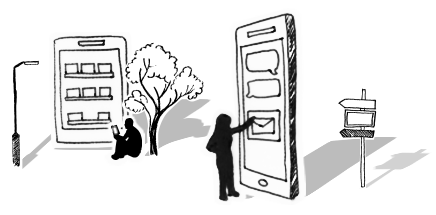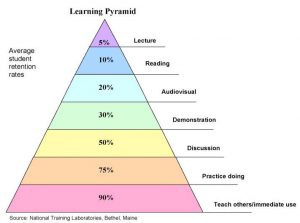




Scenario Based Learning for Change Programmes
The learning industry loves a three letter acronym! SBL, or Scenario Based Learning, is one of the latest ones to hit the headlines, but what is it and how can it improve the learning experience?
Simply put, SBL relates learning to a real-life situation, with scenarios, sometimes in the form of “stories” (storification – another buzzword for another blog!), allowing people to better understand not only what they are learning, but why they should learn it. It also puts the learner in control, asking them to discover answers to questions rather than being just provided with information.
A simple example; rather than the instructor saying “the SUM function totals columns of numbers”, instead they could say something like; “Imagine you need to total all the sales by region for the last month. How would you do that?”. SBL both contextualises the learning point as something a person would need to do, giving them motivation, and provides them with the opportunity to find out the answer to the problem themselves.
Another key aspect of SBL is that the learner should be set more complex challenges to solve as they progress through the learning and their knowledge and experience increases. This both improves engagement for the learner and allows the facilitator to assess learner competence as they progress through the learning, identifying any knowledge gaps to be addressed, rather than having a separate quizzing/testing element to the learning.
A feature of this learner-driven approach is that learning is more likely to go “off-piste”, rather than following a defined path, as the needs of the participants cause them to take the learning event in the direction they want to go. This means that the facilitator needs to know their subject inside-out to ensure they are able to follow a path that they may not have anticipated.
Finally, SBL needs to be an interactive process. Participants interact with each other, the situation and the facilitator, increasing involvement and allowing them to learn not only from the course content, but from each other’s own, real-world experience of similar scenarios.
In effect, learners are teaching each other as part of the event, a very positive outcome, given that people retain 90% of what they teach others/use immediately, as opposed to only 5% of information received in lecture format, as shown in the “Learning Pyramid” below:
SBL works very well when applied to complex situations, where critical decisions need to be made in real time. For example, Afiniti recently used SBL in a health and safety session; delegates had to not only identify the hazards in a given scenario, they then had to identify what control measures they would put in place to mitigate those hazards.
The flipside of all this is that the learning can take longer to prepare and to deliver, but if the end result is that learners are involved in their learning, motivated to find out more and can relate what they have learned to real-life situations that they face, this is a worthwhile investment.
To get the latest change tips, advice and guidance directly to your inbox, sign up to our monthly Business Change Digest.

